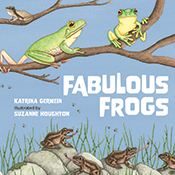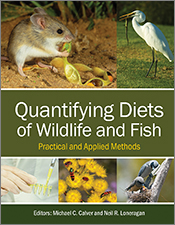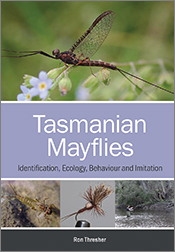Vegetation of Australian Riverine Landscapes
Biology, Ecology and Management
Edited by: Samantha Capon, Cassandra James, Michael ReidThis book highlights the biology, ecology and management of the incredibly diverse riverine vegetation across Australia.
Vegetation communities in Australia's riverine landscapes are ecologically, economically and culturally significant. They are also among the most threatened ecosystems on the continent and have been dramatically altered as a result of human activities and climate change. Vegetation of Australian Riverine Landscapes brings together, for the first time, the results of the substantial amount of research that has been conducted over the last few decades into the biology, ecology and management of these important plant communities in Australia. + Full description
The book is divided into four sections. The first section provides context with respect to the spatial and temporal dimensions of riverine landscapes in Australia. The second section examines key groups of riverine plants, while the third section provides an overview of riverine vegetation in five major regions of Australia, including patterns, significant threats and management. The final section explores critical issues associated with the conservation and management of riverine plants and vegetation, including water management, salinity, fire and restoration.
Vegetation of Australian Riverine Landscapes highlights the incredible diversity and dynamic nature of riverine vegetation across Australia, and will be an excellent reference for researchers, academics and environmental consultants.
- Short descriptionNews
This title is no longer available in print, but can still be purchased as an eBook.
Reviews
"Vegetation of Australian Riverine Landscapes lives true to its name, and provides an in-depth description of the plants and processes that are found in our Australian freshwater environments. Written in a succinct manner and with concise graphs and maps, this text will serve anyone interested in learning more about our riverine landscapes."
Emma Walsh, Wild Melbourne (blog), 12/4/16
"a great current reference for anyone working, interested in or wanting to know more about our iconic riparian landscapes in Australia."
Martin Driver, Australasian Plant Conservation, August 2016
"Vegetation of Australian Riverine Landscapes: Biology, Ecology, and Management is highly recommended reading for land and water managers, researchers and students who have an interest in riverine landscapes. I found the book to be of great value and highly informative."
William Jackson, Australasian Journal of Environmental Management 25(4), 2018.
Details
ePDF | April 2016ISBN: 9780643104525
Publisher: CSIRO Publishing
Available from eRetailers
ePUB | April 2016
ISBN: 9780643104532
Publisher: CSIRO Publishing
Available from eRetailers
Features
- A comprehensive, expertly written scientific review of the field
- Information organised by landscape type with specific chapters on poorly known landscapes
- Management approach provided where relevant
Contents
ForewordList of contributors
Introduction (Samantha Capon, Michael Reid and Cassandra James)
Note from the editors
References
Section 1: Australia’s riverine vegscapes in space and time
Section 2: Riverine plants
Section 3: Riverine vegetation
Section 4: Management concerns
Index
View the full table of contents (PDF).
Authors
Dr Samantha Capon is a researcher at the Australian Rivers Institute, Griffith University. She has over 15 years’ experience researching the ecology and management of riparian, floodplain and wetland vegetation in inland Australia. Her research explores the diversity and dynamics of these ecological systems and informs their conservation and restoration.
Cassandra James is a Senior Research Scientist and Vegetation Ecologist with the Centre for Tropical Water and Aquatic Ecosystem Research at James Cook University. Her research focuses on understanding the effects of natural and man-made factors on vegetation of riverine ecosystems.
Michael Reid is a Senior Lecturer in Physical Geography at the University of New England. His research focuses on understanding pattern and process in floodplain and river ecosystems and includes floodplain vegetation dynamics, palaeoecology, food web ecology and ecohydrology.








